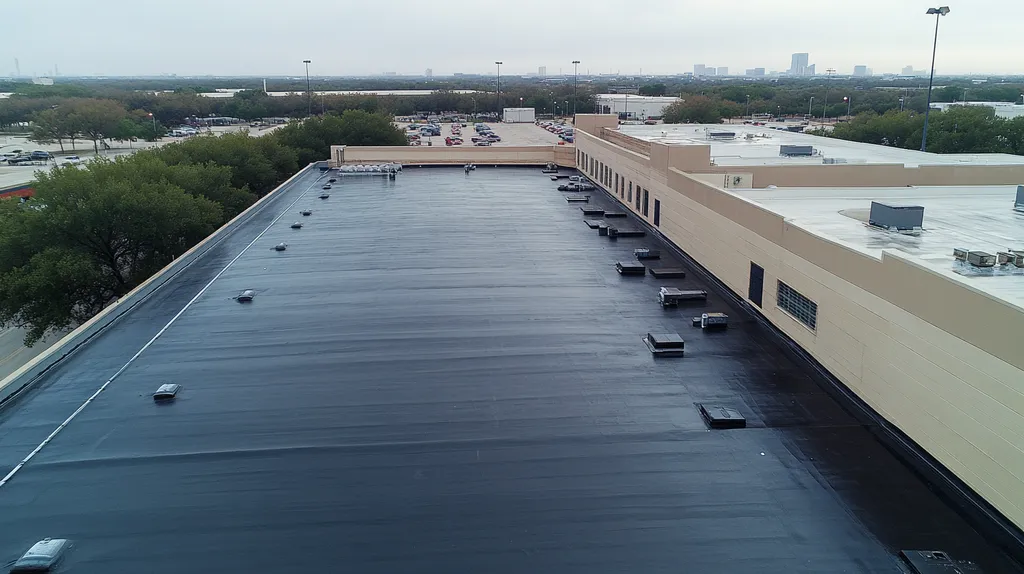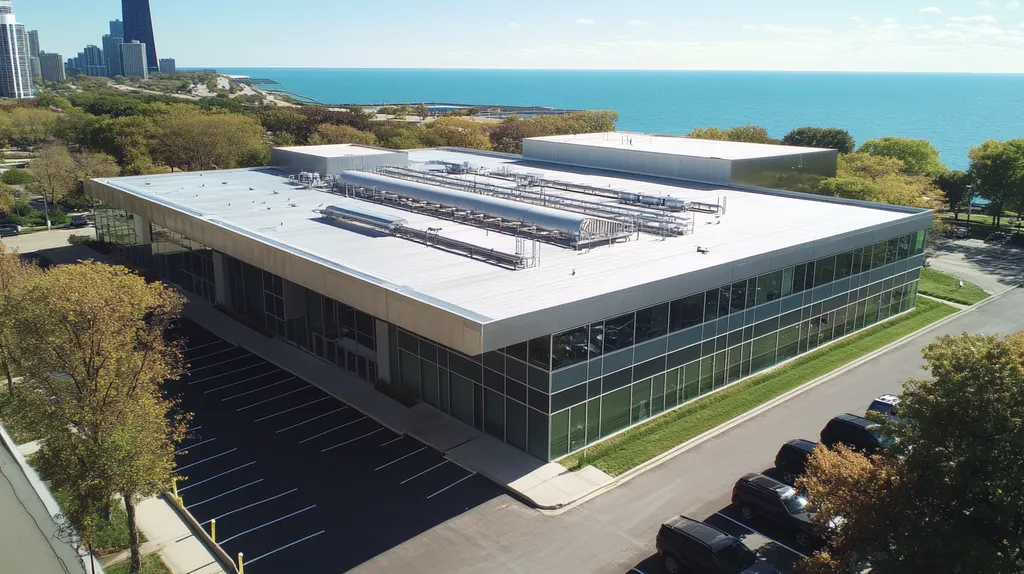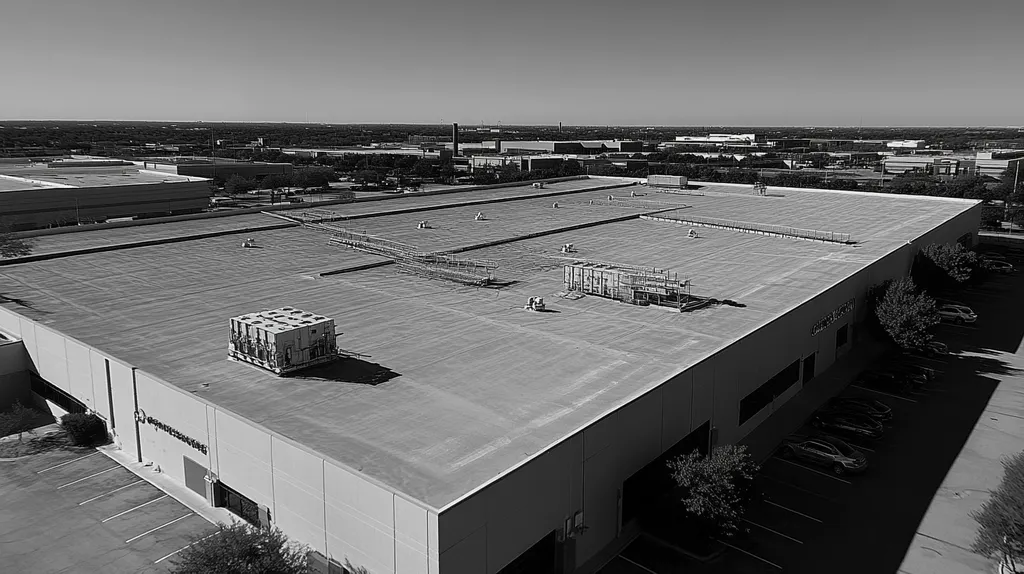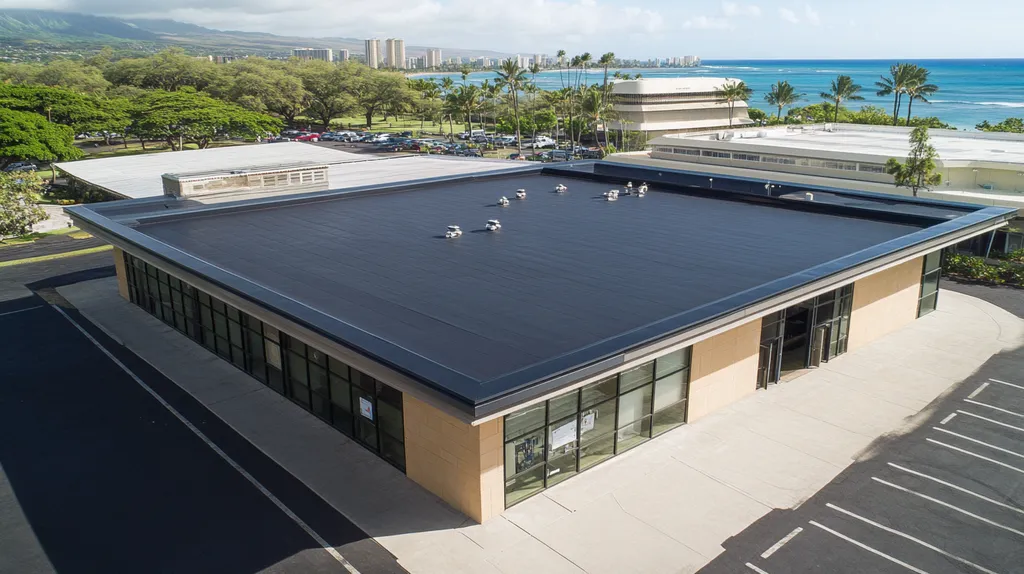Welcome to today’s Battle Royale featuring two roofing heavyweights: “Pressure Washing” in the east corner versus “Chemical Cleaning” in the west!
Tonight’s showdown pits these contenders against each other across six punishing rounds designed to test every aspect of their performance for Industrial Roof Preparation.
At stake? Millions in potential costs, decades of building protection, and the critical performance demands of modern commercial and industrial facilities.
Our professional judging panel will evaluate each round on technical merit, real-world performance, and value delivery. After all six rounds, we’ll declare our ultimate champion.
Ladies and gentlemen, facility managers and building owners… it’s time to rumble!
ROUND 1: INITIAL COSTS & INSTALLATION
When it comes to industrial roof preparation, the difference between doing it right and doing it wrong can mean hundreds of thousands in unexpected costs. With coating failures accounting for nearly 80% of premature roof system breakdowns, the stakes couldn’t be higher. Let’s examine how pressure washing and chemical cleaning stack up in terms of initial investment and implementation challenges.
Material Expenses
Pressure washing equipment represents a significant upfront investment, typically ranging from $3,000 to $8,000 for commercial-grade systems. However, ongoing material costs remain minimal, requiring only water and occasional mild detergents.
Chemical cleaning solutions demand less expensive equipment but come with recurring chemical costs of $0.15 to $0.30 per square foot. These specialized cleaners also require proper storage facilities and safety equipment, adding to the overall expense.
Industry standards emphasize the importance of proper preparation methods for ensuring coating adhesion and performance. (source: ASTM International)
When considering total material expenses over time, pressure washing demonstrates clear cost advantages. ADVANTAGE: PRESSURE WASHING
Installation Complexity
Pressure washing setup requires minimal preparation time and can be executed with a small crew. The primary complexity lies in maintaining proper pressure settings to avoid membrane damage.
Chemical cleaning demands extensive preparation, including membrane testing, proper dilution ratios, and careful application sequences. Workers need specialized training and certification to handle industrial cleaning agents safely.
The need for containment systems and proper chemical disposal adds another layer of complexity to chemical cleaning operations. ADVANTAGE: PRESSURE WASHING
Project Timeline
A typical 20,000-square-foot roof can be pressure washed in 6-8 hours under ideal conditions. The surface dries quickly, allowing for same-day coating application in many cases.
Chemical cleaning requires multiple phases: application, dwell time, neutralization, and rinsing. This process typically spans 2-3 days for the same roof area, not including weather delays.
The extended timeline of chemical cleaning increases labor costs and facility disruption. ADVANTAGE: PRESSURE WASHING
ROUND 1 WINNER: PRESSURE WASHING
ROUND 2: DURABILITY & LIFESPAN
In the world of industrial roofing, preparation method choice can mean the difference between a coating that lasts 15 years and one that fails in 18 months. With replacement costs averaging $18-25 per square foot, the stakes are astronomical. Let’s examine how pressure washing and chemical cleaning impact the long-term durability of industrial roof systems.
Surface Integrity Impact
Pressure washing delivers immediate visual results but can introduce microscopic damage to roofing membranes. Even experienced operators risk creating hidden weak points that compromise the substrate’s structural integrity.
The force of pressurized water can drive moisture into tiny membrane separations, leading to delamination and accelerated deterioration. These issues often remain undetected until significant damage occurs.
Chemical cleaning methods work with the membrane’s material properties rather than against them. The gentler approach preserves surface texture while effectively removing contaminants.
ADVANTAGE: CHEMICAL CLEANING
Coating Adhesion Performance
Pressure washing can create an artificially smooth surface that actually reduces coating adhesion. The aggressive cleaning action may remove the surface profile needed for proper mechanical bonding.
Chemical cleaners are specifically formulated to optimize surface chemistry for coating application. This targeted approach ensures maximum adhesion potential without compromising membrane integrity.
The enhanced bonding capability results in significantly fewer coating failures and longer-lasting protection. ADVANTAGE: CHEMICAL CLEANING
Long-term Maintenance Requirements
Pressure-washed surfaces often require more frequent maintenance due to uneven cleaning and potential surface damage. The inconsistent results can lead to premature coating breakdown in poorly cleaned areas.
Chemical cleaning provides more uniform results across the entire roof surface. This consistency translates to more predictable maintenance schedules and fewer unexpected repairs.
While both methods require periodic maintenance, chemical cleaning’s superior surface preparation reduces the frequency and extent of required touch-ups. ADVANTAGE: CHEMICAL CLEANING
ROUND 2 WINNER: CHEMICAL CLEANING
ROUND 3: PERFORMANCE FACTORS
When it comes to industrial roof coatings, proper surface preparation can mean the difference between a 15-year protection system and a costly failure within months. With coating failures accounting for up to 80% of premature roof system breakdowns, choosing the right cleaning method isn’t just about getting the surface clean – it’s about creating the optimal foundation for coating adhesion.
Effectiveness of Cleaning
Pressure washing excels at removing visible surface contaminants and loose debris through sheer force. However, this brute-force approach often fails to address oil-based contaminants and industrial residues that can compromise coating adhesion.
Chemical cleaning solutions are specifically engineered to break down and remove both visible and invisible contaminants. These specialized formulations penetrate deep into the substrate, dissolving oils and industrial pollutants that pressure washing simply can’t touch.
While pressure washing may appear to create a clean surface, chemical cleaning ensures a truly pristine substrate at the molecular level. ADVANTAGE: CHEMICAL CLEANING
Surface Condition Post-Cleaning
Pressure washing can create micro-abrasions and surface irregularities that affect coating adhesion. The high-pressure impact may also drive contaminants deeper into porous substrates rather than removing them completely.
Chemical cleaning methods work more gently, preserving the roof membrane’s integrity while creating an optimal surface profile for coating adhesion. (source: Construction Specifier)
The superior surface preparation achieved through chemical cleaning translates directly to better coating performance. ADVANTAGE: CHEMICAL CLEANING
Impact on Coating Lifespan
Pressure-washed surfaces often exhibit inconsistent cleaning results, leading to varying degrees of coating adhesion across the roof. These variations can create weak points where coating failure begins, spreading to compromise larger areas.
Chemical cleaning delivers uniform results across the entire surface, ensuring consistent coating adhesion throughout. This uniformity eliminates weak points and potential failure zones that could compromise the coating system.
The superior consistency and thorough contaminant removal of chemical cleaning methods directly contribute to extended coating lifespans. ADVANTAGE: CHEMICAL CLEANING
ROUND 3 WINNER: CHEMICAL CLEANING
ROUND 4: MAINTENANCE REQUIREMENTS
When facility managers cut corners on roof maintenance, they’re gambling with their building’s most critical asset. With replacement costs averaging $18-25 per square foot, choosing the wrong maintenance approach isn’t just an inconvenience – it’s a potential budget-killer. The right cleaning method can extend coating life by up to 10 years, while the wrong one can accelerate deterioration and void warranties.
Effectiveness in Preventing Future Issues
According to ASTM International’s roofing preparation standards, proper evaluation and preparation of roof membranes significantly impacts coating success and longevity. The right cleaning method creates optimal conditions for coating adhesion while preventing future membrane degradation. (source: ASTM International)
Pressure washing provides immediate visual results but often fails to address underlying contaminants. The forceful water impact can actually drive pollutants deeper into membrane pores, creating hidden time bombs of deterioration.
Chemical cleaning systematically breaks down and removes both surface and embedded contaminants. This thorough approach prevents the re-emergence of problems and creates a genuinely clean substrate for coating application.
ADVANTAGE: CHEMICAL CLEANING
Time and Labor Requirements
Pressure washing operations can typically cover 20,000 square feet in a single shift. This speed comes with risks, as rushed cleaning can miss critical areas and create inconsistent results.
Chemical cleaning requires more time for proper application, dwell periods, and neutralization. While this extends the project timeline, it ensures comprehensive cleaning and reduces the frequency of needed maintenance.
The trade-off between immediate efficiency and long-term effectiveness makes this category too close to call. ADVANTAGE: TIE
Cost Impact Over Time
Pressure washing appears cost-effective initially but often requires more frequent cleaning cycles. These repeated treatments can actually accelerate membrane wear and lead to premature replacement needs.
Chemical cleaning commands higher upfront costs but delivers superior long-term value. The thorough cleaning and preserved membrane integrity typically extend maintenance intervals by 40-50%.
When considering total lifecycle costs, chemical cleaning’s superior performance and reduced frequency requirements make it the clear financial winner. ADVANTAGE: CHEMICAL CLEANING
ROUND 4 WINNER: CHEMICAL CLEANING
ROUND 5: SUSTAINABILITY CREDENTIALS
In today’s regulatory environment, choosing the wrong roof cleaning method isn’t just about performance – it’s about avoiding six-figure EPA fines and potential criminal charges. With sustainability requirements tightening yearly and waste disposal costs skyrocketing, the environmental impact of roof preparation has become a critical business consideration that can make or break your bottom line.
Environmental Impact
Pressure washing systems typically consume 3-8 gallons per minute, with most of that water becoming contaminated runoff. This high-volume approach creates significant environmental risks as pollutants, oils, and debris are dispersed across large areas.
Chemical cleaning methods utilize specialized formulations that break down contaminants while minimizing water usage. Modern eco-friendly solutions are biodegradable and designed to neutralize harmful compounds rather than simply displacing them.
The controlled application and contained disposal processes of chemical cleaning significantly reduce environmental impact compared to pressure washing’s scatter-shot approach. ADVANTAGE: CHEMICAL CLEANING
Resource Efficiency
Pressure washing operations on a typical 20,000-square-foot industrial roof can consume over 2,000 gallons of water. This excessive usage strains local water resources and increases facility utility costs.
Chemical cleaning requires 60-80% less water while achieving superior results through targeted contaminant removal. The reduced water consumption translates directly to lower utility bills and decreased strain on municipal systems.
When considering total resource consumption and efficiency, chemical cleaning’s precise application method proves substantially more sustainable. ADVANTAGE: CHEMICAL CLEANING
Regulatory Compliance
Pressure washing creates significant challenges for EPA compliance, particularly regarding contaminated runoff control. The high-volume water usage often overwhelms containment systems, leading to regulatory violations and potential fines.
Chemical cleaning methods offer precise application control and easier waste containment. The Construction Specifier notes that proper surface preparation methodology significantly impacts both environmental compliance and coating performance. (source: Construction Specifier)
With stricter environmental regulations on the horizon, chemical cleaning’s superior containment and control capabilities make it the clear choice for long-term compliance. ADVANTAGE: CHEMICAL CLEANING
ROUND 5 WINNER: CHEMICAL CLEANING
ROUND 6: SPECIALIZED APPLICATIONS
When it comes to specialized industrial roofing applications, choosing the wrong preparation method isn’t just ineffective – it’s potentially catastrophic. Recent industry data shows that 65% of coating failures in specialized applications stem directly from improper surface preparation. With specialized industrial roofs often containing hazardous materials or sensitive equipment below, the stakes go far beyond simple repair costs.
Critical Environment Applications
Industrial facilities housing sensitive equipment or processes require exceptional attention to preparation methods. Data centers, pharmaceutical manufacturing, and clean rooms demand pristine conditions during and after roof preparation.
Pressure washing creates significant overspray and moisture migration risks. The high-volume water usage can penetrate even minor penetrations, potentially causing millions in equipment damage.
Chemical cleaning offers precise application control and minimal moisture exposure. The contained process virtually eliminates risks to sensitive operations below while providing superior cleaning results.
ADVANTAGE: CHEMICAL CLEANING
Temperature-Sensitive Surfaces
Many industrial roofs incorporate temperature-sensitive materials or house climate-controlled processes that can’t tolerate thermal shock. Surface preparation must account for these specific material limitations.
Pressure washing can cause rapid temperature changes as cold water hits hot surfaces. This thermal shock can create immediate damage or accelerate existing deterioration patterns.
Chemical cleaning maintains consistent surface temperatures throughout the process. Specially formulated solutions work effectively without creating dangerous thermal gradients.
ADVANTAGE: CHEMICAL CLEANING
Hazardous Material Considerations
Industrial roofs often accumulate residues from manufacturing processes, chemical exhaust, or environmental pollutants. Proper preparation must address these contaminants without creating additional hazards.
Pressure washing can aerosolize hazardous materials, creating respiratory risks and contamination spread. The high-pressure spray often lacks the chemical properties needed to neutralize dangerous compounds.
Chemical cleaning methods can be specifically formulated to neutralize hazardous materials while maintaining containment. The Construction Specifier notes that proper surface preparation methodology significantly impacts both safety compliance and coating performance. (source: Construction Specifier)
ADVANTAGE: CHEMICAL CLEANING
ROUND 6 WINNER: CHEMICAL CLEANING
AND THE WINNER IS…
After six grueling rounds of technical evaluation, we have our verdict…
Ladies and gentlemen, in a dominant performance winning FIVE of our six rounds, the undisputed champion of industrial roof preparation is CHEMICAL CLEANING!
This technical powerhouse demonstrated superior strength across durability, performance, maintenance, sustainability, and specialized applications. Its ability to deliver consistent results while preserving membrane integrity proved decisive in securing this decisive victory.
But don’t count pressure washing out completely! In situations demanding rapid deployment with minimal setup and lower initial costs, this veteran contender still packs a powerful punch. Round 1 proved its worth for basic cleaning needs where speed and simplicity are paramount.
*Important Disclaimer: Every facility faces unique challenges based on local conditions, regulatory requirements, and specific building characteristics. While this analysis reflects general industry patterns, individual results may vary. Always consult qualified roofing professionals who can evaluate your specific situation and recommend the most appropriate solution for your needs.*
In the high-stakes world of industrial roofing, there’s no room for uncertainty. Choose your preparation method like you’d choose your corner man – based on proven performance, technical expertise, and perfect alignment with your specific fighting style.
Remember: In the roofing arena, the real champions are those who make informed decisions based on their facility’s unique requirements rather than following the crowd into the wrong corner.
FREQUENTLY ASKED QUESTIONS
Q. What are the initial costs of preparing a commercial roof?
A. Initial costs for roof preparation vary. Pressure washing usually demands a higher upfront cost for equipment, while chemical cleaning incurs ongoing chemical costs. Ultimately, thorough preparation saves funds long-term by reducing potential failures and repairs.
Q. How does cleaning method affect industrial roof longevity?
A. The cleaning method directly influences coating lifespan. Chemical cleaning preserves surface integrity, ensuring better adhesion and significantly fewer failures. Conversely, pressure washing can create weaknesses, leading to premature failures and costly replacements. Choose wisely!
Q. Which method provides better performance for coating?
A. Chemical cleaning offers superior performance through effective deep contaminant removal. While pressure washing focuses on surface debris, it often fails to address grease and oils deeply embedded in the substrate. Better cleaning means better coating adhesion.
Q. How do cleaning methods impact future roof maintenance?
A. Maintenance requirements differ significantly between methods. Chemical cleaning reduces the frequency of required maintenance thanks to its thorough preparation. In contrast, the uneven results from pressure washing can lead to more frequent repairs or touch-ups.
Q. What are the sustainability impacts of roof cleaning options?
A. Chemical cleaning is not only effective but also eco-friendly. It consumes less water and employs biodegradable solutions, minimizing environmental impact. Pressure washing, by contrast, may lead to contaminated runoff, creating significant ecological risks.
Q. How does preparation method affect specialized roof applications?
A. Specialized roofs often require careful preparation due to their sensitive equipment or hazardous materials. Chemical cleaning’s precise control and gentleness are superior for these applications, reducing risks compared to the aggressive nature of pressure washing.
Q. Can roof cleaning methods affect insurance premiums?
A. Yes, the method of roof preparation can impact insurance premiums. Proper cleaning minimizes risks associated with coating failures and potential damages. Insurers favor facilities that demonstrate diligence in maintenance, potentially leading to lower premium costs over time.











